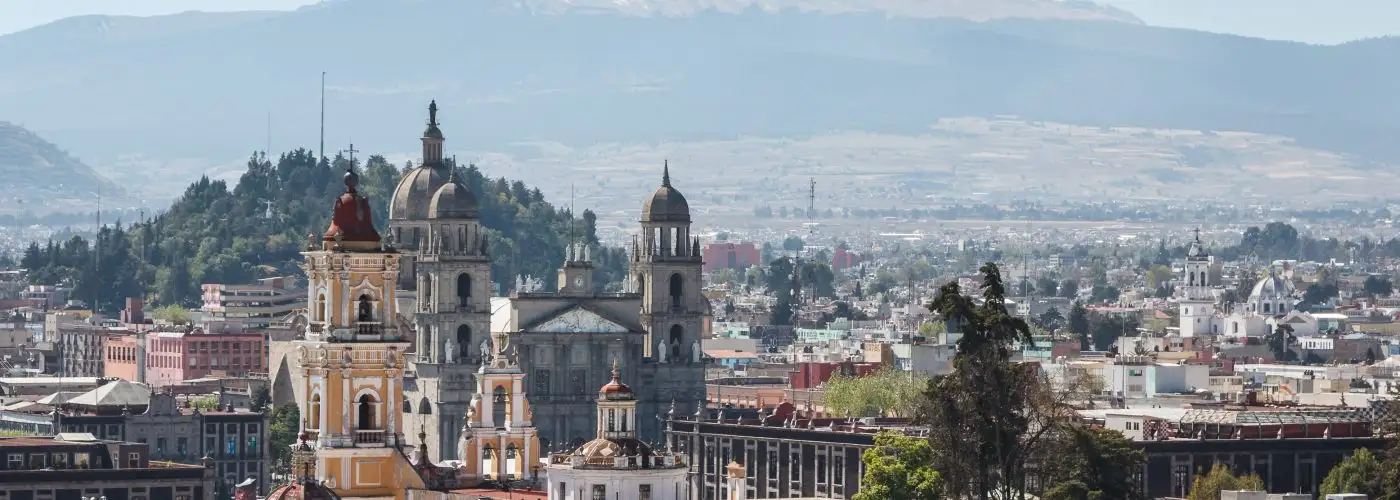There’s a lot more to Mexico than Tijuana, the Zocalo and the beaches of Cancun. If you’re willing to range a bit further afield, forego some of the established-tourist-circuit conveniences, and occasionally rough it, you’ll be amply rewarded. Oaxacan mountain villages, jungle adventures among half-excavated ruins and the Holy Land of slow-cooked pork all await, plus a grip of other spots off the beaten path that will give you a deeper look into the soul of Mexico.
In a country that’s been indiscriminately battered by bad press about local insurgencies and drug wars, you’re sure to meet plenty of locals eager to show you the Other Mexico, and to help you find the adventure you’re seeking in their particular corner of the country. Pack your passport, a sense of adventure and a good appetite, and we promise you’ll come home with plenty of good stories to share. Here are 11 amazing—yet virtually unknown to most American tourists—Mexico destinations worth discovering for yourself.
The Mexico You Don’t Know (but Should)
Image Gallery
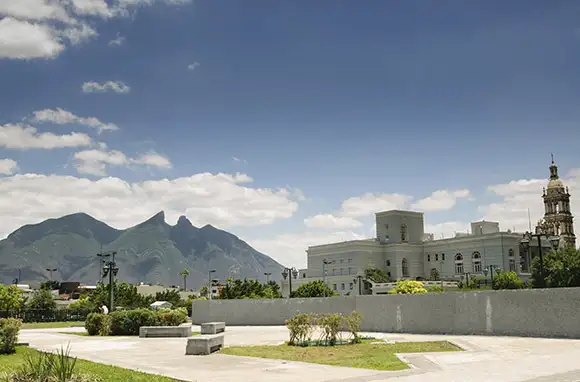
Monterrey
The city of Monterrey, in the northeast border state of Nuevo León, is Mexico's business-and-industry center. It has a reputation as a hard-working town—but it's also a place of incredible beauty and tradition. With the huge, saddle-shaped Cerro de la Silla mountain rising straight out of the city's neighborhoods, the landscape here has a rugged beauty. And to be a Regiomontano, as the locals are called, is to have a sophisticated sense of how a big-money culture—the city has highest per-capita income in the entire nation—mixes with the leather-tough ranching traditions of Northern Mexico.
Parque Fundidora, a former steel mill converted into a massive city park, is a super-sized steampunk fantasyland that's also home to a Sesame Street theme park. If you're looking for nature, Chipinque Ecological Park is your spot: a vertiginous eco-park on the flanks of the Sierra Madre Oriental that offers fantastic views of the city—and, for the adventurous, climbs to the top of dizzying Copete de las Águilas ("The Eagles' Crest").
Don't forget your appetite. The city's trademark dish is cabrito (roasted goat), unpretentiously grilled to perfection on a spit with surrounded by glowing coals. Your best bets are the (rightfully) self-proclaimed king of Monterrey's cabrito joints, El Rey del Cabrito, which modestly announces its supremacy with a giant crown on the roof. A newer, somewhat more restrained restaurant called San Carlos has also been earning high marks.
In the fall, the local markets burst with the color of fiery piquín peppers, picked wild and fresh in the brush country surrounding Monterrey. The city is a quick commuter-jet hop from the U.S.; judging from the flight-status displays in the airport, it might as well be a regional airport in far Southwest Texas.

Monterrey
The city of Monterrey, in the northeast border state of Nuevo León, is Mexico's business-and-industry center. It has a reputation as a hard-working town—but it's also a place of incredible beauty and tradition. With the huge, saddle-shaped Cerro de la Silla mountain rising straight out of the city's neighborhoods, the landscape here has a rugged beauty. And to be a Regiomontano, as the locals are called, is to have a sophisticated sense of how a big-money culture—the city has highest per-capita income in the entire nation—mixes with the leather-tough ranching traditions of Northern Mexico.
Parque Fundidora, a former steel mill converted into a massive city park, is a super-sized steampunk fantasyland that's also home to a Sesame Street theme park. If you're looking for nature, Chipinque Ecological Park is your spot: a vertiginous eco-park on the flanks of the Sierra Madre Oriental that offers fantastic views of the city—and, for the adventurous, climbs to the top of dizzying Copete de las Águilas ("The Eagles' Crest").
Don't forget your appetite. The city's trademark dish is cabrito (roasted goat), unpretentiously grilled to perfection on a spit with surrounded by glowing coals. Your best bets are the (rightfully) self-proclaimed king of Monterrey's cabrito joints, El Rey del Cabrito, which modestly announces its supremacy with a giant crown on the roof. A newer, somewhat more restrained restaurant called San Carlos has also been earning high marks.
In the fall, the local markets burst with the color of fiery piquín peppers, picked wild and fresh in the brush country surrounding Monterrey. The city is a quick commuter-jet hop from the U.S.; judging from the flight-status displays in the airport, it might as well be a regional airport in far Southwest Texas.
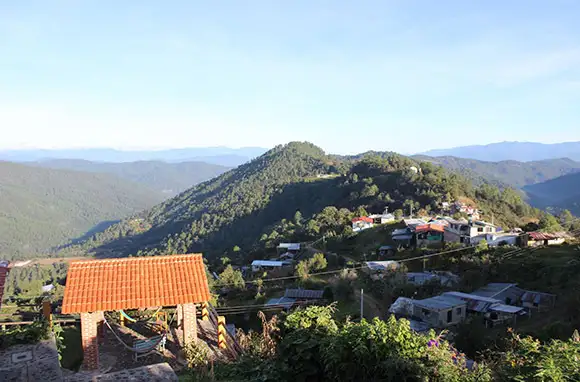
Pueblos Mancomunados of the Sierra Juarez
Take to the pine-clad highlands of Oaxaca with an overnight visit to the indigenous villages of the Sierra Juarez. For decades, logging was the only real money maker in the mountains just east of the city of Oaxaca. But a loose alliance of remote Zapotec communities known as the Pueblos Mancomunados ("united villages") is working hard to recast itself as an eco-tourism hotspot. The pueblos have created a network of hiking and mountain-biking trails (as well as the now-universally ubiquitous zip-line). Local guides can take you from village to village, where pleasant if rustic cabanas—many of which have fireplaces—are available for rent. Mountain bikes and horses are also available for hire. Devotees rave about biking through pine forests past giant agave plants, the spiky wonders from which tequila and mezcal are made. The area is known for its much-coveted harvests of wild mushrooms—which, if you're lucky, will show up in your meals. The entire alliance can be charmingly scruffy and is refreshingly Internet-shy, so you may want to wait to make reservations until you arrive in the city of Oaxaca, where each participating village runs its own office for walk-in bookings. It is possible, though, to make online advance bookings for some of the pueblos through Expediciones Sierra Norte.
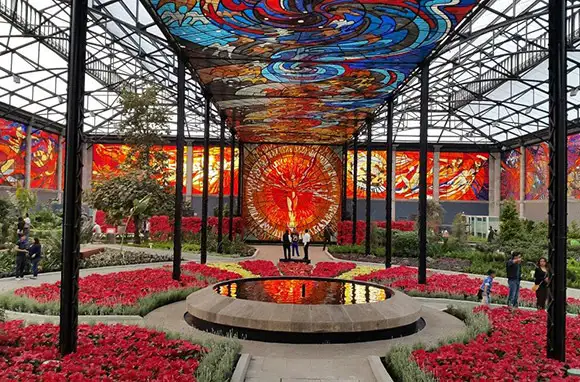
Toluca
Toluca, some 40 miles southwest of Mexico City, is home to the Cosmovitral, a former market given a second life as a walk-in stained-glass mural and botanical garden. The iron and stone building, which contains roughly a half-million pieces of stained glass, feels like an airy, light-filled Art Nouveau train station with regular departures for the far reaches of the cosmos. The centerpiece of the mural, a panel called El Hombre Sol ("Sun Man"), reflects the harmony of man with all Creation. El Hombre Sol is precisely aligned so that, on the spring equinox, the sun's rays transform him into an eye-dazzling spectacle. Of course, don't forget the plants: The botanical garden is home to more than 400 species of plants from Central and South America, and around the world. While you're visiting the Cosmovital, keep an eye peeled for Cirilo Hernandez Garcia and Cristobal Gonzalez Martinez, the two workers who polish every last piece of stained glass in the building over a 15-month period—and then begin their circuit all over again.
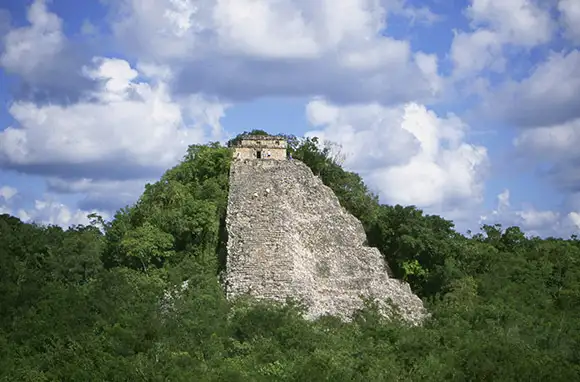
Coba
Want to get your Indiana Jones fix, on a bicycle? Head to the Maya ruins at Coba, in the southern state of Quintana Roo. Roughly 45 minutes from Tulum, Coba can feel like another world. Many of the ruins remain unexcavated, or are only partially so. You're left with the sense of an ancient kingdom slowly disappearing into the jungle—which is exactly what it was, roughly 1,000 years ago. All told, it's a humongous site, nearing 20,000 acres. Even though much of that is off-limits to visitors, Coba still has the feel of an archaeological playland where you can choose your own adventure. One seasoned Mexico hand and archaeological enthusiast calls it "one of the best sites to understand the extent of Mayan civilization, and one of the most fun to visit." From the entrance, it's about a kilometer in to the heart of the site, so most visitors rent bicycles (available on-site), or hire the services of a bicycle rickshaw. From there, you can pedal your way back to the 11th century and the picturesquely crumbling Piramide de Nohoch Mul, which seems to rise straight from the merciless jungle. The Yucatan is notoriously steamy, so if you're looking to cool off afterwards, take heart: The area around Coba is lousy with cenotes, the limestone sinkholes that make for awe-inspiring snorkeling.
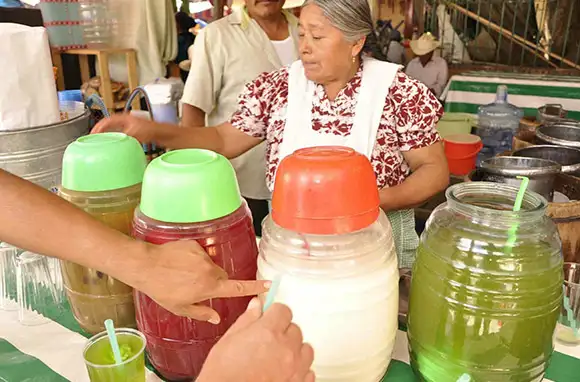
Tlacolula
If you're looking to escape Mexico's tourist markets, there's no better place than the rotating locals' market that takes place in one of seven towns near the city of Oaxaca every day of the week. On Sunday, the market arrives in the town of Tlacolula, and folks pull out all the stops. This is real, dirt-under-the fingernails rural Mexico, and it makes for great people watching as Oaxaqueños of all stripes trek down from the hills to hawk their wares—and buy. Everywhere you turn, there's something you've probably never seen before: from gunny sacks full of indigenous chile peppers and baskets of chapulines—the fried crickets that are the signature of local cooking—to the pizza-paddle-shaped steel implement called a coa that's used to cut the heart out of agave plants for distillation into mescal, the local version of tequila. If you're feeling daring, you can beat the heat with a cold cup of tejate, the frothy, laboriously prepared corn-and-cacao-based local version of an iced cappuccino that may trace its lineage back to ancient Zapotec ceremonial offerings. At some point, a local brass band will appear on the steps of the 450-year-old Church of La Asuncion and burst into rousing renditions of banda favorites.
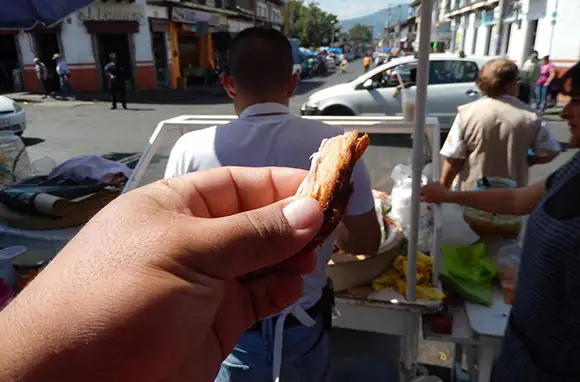
Quiroga
Hungry for adventure? For fans of carnitas, that tender-crisp porky paradox, the town of Quiroga, Michoacan is the Promised Land. Located on the edge of Lake Patzcuaro, near Morelia, Quiroga is widely acknowledged to have the best carnitas in the entire republic. The town's main plaza is a veritable carnival of the stuff, with vendors cooking the pork for hours in specially made copper pots called cazos. Carnitas Carmelo gets high marks and has spawned a minor empire, though it would be hard to go wrong anywhere in Quiroga. The town, named after a 16th-century Spanish bishop who worked to empower the local Purepecha (aka Tarascan) people, is also known for its wooden artesanías, or crafts.
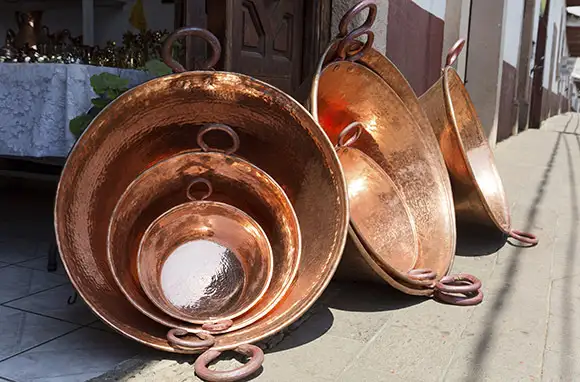
Santa Clara del Cobre
If you can't bear the thought of life without authentic carnitas once you're back home, make the trek from Quiroga over to the other side of Lake Patzcuaro. The town of Santa Clara del Cobre is famed for its copperwares, including the cazos that no self-respecting carnitas cook would be caught without. There's much more to Santa Clara del Cobre than cazos, though, so take some time to thoroughly peruse the shops crammed with brilliant copper utensils of all sorts. Santa Clara del Cobre has enough atmosphere to have merited designation as a Pueblo Magico, although it is one of the lesser-knowns.
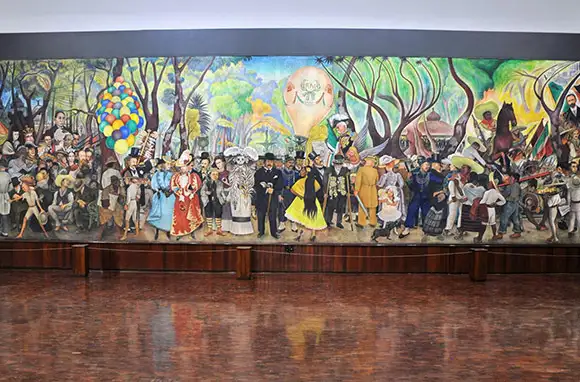
Hidden Mexico City
Old Mexico City hands have a closely guarded secret: Some of the best work Diego Rivera ever did is discreetly tucked away inside the Secretaria de Educacion Publica building, just a few blocks north of the Zocalo. The murals, to which Rivera devoted more than four years of his life, wrap around three floors, each in a pair of inner courtyards. Communists and art lovers can unite in their appreciation of paintings that depict Rivera at his satiric and storytelling best: Themes include ruminations on the evils of capitalism, the power of the Mexican people, and the magic of indigenous folk life, as well as the benefits of literacy and tractors. Rivera, a committed Communist at the time he painted the murals, adorned his signature on many with a miniature hammer and sickle. Don't miss "The Arsenal," which depicts Frida Kahlo dispensing rifles and bayonets to a throng of grim-faced revolutionaries. "The Wisemen" is a biting riposte to Rivera's critics, in which he bedizens the head of poet Rabindranath Tagore with what looks to be a wizard's hat—but, on closer inspection, turns out to be an oil funnel. The Secretaria de Educacion Publica is a functioning government office building, so it's only open on weekdays—but admission is free.
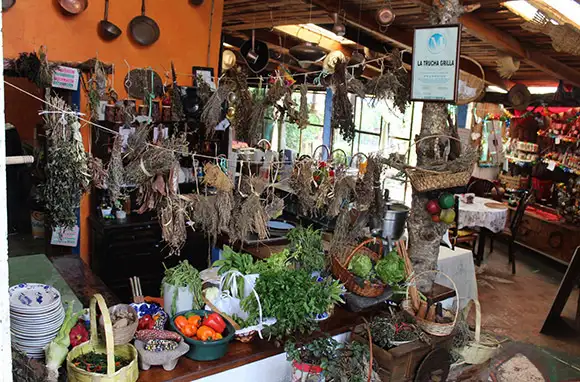
Pueblos Magicos
Fifteen years ago, the Mexican government launched an initiative to designate small towns with particularly notable beauty or cultural heritage as "Pueblos Magicos." Some, like Tequila, are names that would be familiar to many people. But there's a host of lesser-known pueblos magicos that are genuinely magical and still largely undiscovered.
One is Mineral del Chico, a former mining town nestled in the forests on the northern rim of the Valley of Mexico in the Sierra de Pachuca range. Car rentals in Mexico City are easy and cheap, and the 73-mile-drive is a fast one that includes a beautiful stretch through El Chico National Park. Once you arrive in Mineral del Chico, you'll practically have the place to yourself: a quiet mountain town in which to spend a weekend exploring on foot.
The area around the town church, Parroquia de la Purisima Concepcion—which dates back to 1569—is home to a couple of simple food stalls that serve dependable favorites like squash-blossom quesadillas. But it's the fish that will make the biggest impression. Trout are practically falling out of trees in Mineral del Chico (there are several trout farms nearby). There are plenty of good restaurants in town, including the not-to-be-missed La Trucha Grilla, where the attentive staff will fix trout more than 20 ways—including cooking a sparklingly fresh fish right there in the dining room hearth, over a wood fire sprinkled with herbs. (The restaurant with a gigantic trout mounted on the roof? That's the one you're looking for.)
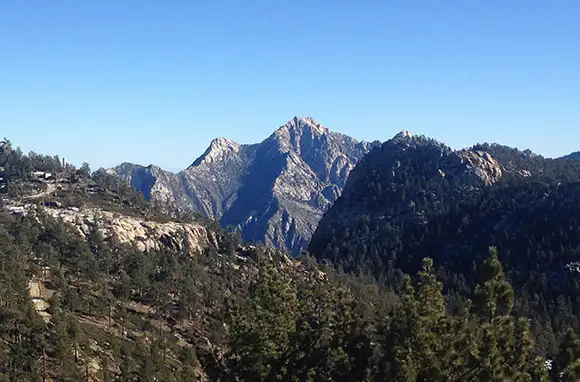
Baja's National Parks
When people think Baja, they tend to think beaches. But the area is also home to a stunning and little-known mountain world. Less than a day's drive from San Diego, two sparsely visited national parks offer a chance to escape into a world of sun-kissed rock, bighorn sheep, and the balmy scents of white fir, sugar pine, lodgepole, and Jeffrey pine. Constitucion de 1857, National Park located east of the Pacific Coast town of Ensenada, is home to the granite-studded Hanson Lake. Even better, the area between Ensenada and the park is in the midst of a serious wine-growing revolution. You can catch the annual harvest festival—known as Fiestas de la Vendimia—in August. Farther south, Sierra de San Pedro Martir National Park is a bit more rugged, and is graced with the tantalizingly named Picacho del Diablo ("the Devil's Peak")—which, at more than 10,000 feet, is the highest peak in Baja California. Thanks to the extremely low levels of nighttime light pollution in the area, Mexico's national astronomical observatory is located close to the park: Be ready to have your socks knocked off by the starry skies. Both parks offer basic cabins as well as camping.
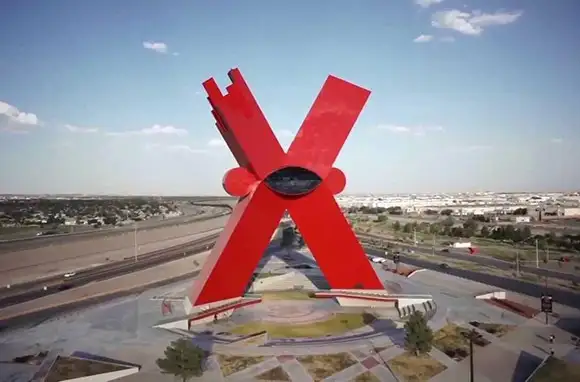
Juarez
Five years ago, it would have been inconceivable that Juarez, once dubbed "Murder City," would ever be a tourist-friendly destination. But people here have been hard at work restarting their city's civic life, and there's never been a more interesting time to visit. Be prepared to be surprised: Juarez is a changing city. Just one sign that there's more than meets the eye in this famously tough city can be found at the Plaza de Toros, where you can still buy tickets to a traditional bullfight—but only after making your way past a gauntlet of boisterous PETA protestors.
In 2014, Juarenses were tremendously proud to relaunch the two-week-long Fiesta Juarez, which had been halted for several years at the height of the drug wars. Much-loved Mexican crooner Vicente Fernandez came to perform, and it has (once again) become a great community event held on the U.S.-Mexico border at the foot of the Equis—the gigantic red 200-foot-tall X-shaped sculpture completed in 2013, whose true meaning people are still trying to decipher. Look for the 2016 incarnation of the fiesta to open in mid-September.
While you're in town, don't miss two Juarez culinary institutions: Burritos Crisostomo (with several locations in both Juarez and El Paso, though be warned that American-size burritos have yet to make it across the border, so at least double your normal order), and Tacos Aaajiji, which has stacks of mesquite outside for grilling up its delectable beef and pork. Neither place will ever get a Michelin star, but they're where businessmen, local families, ranchers and cops rub elbows every day. For a slightly surreal border crossing experience, you can walk from downtown El Paso across the Santa Fe Bridge to Juarez's Kentucky Bar, one of several reported birthplaces of the margarita. Once you've had your fill, a five-minute walk back over the bridge will get you straight back onto U.S. soil and the familiar comforts of home.
More from SmarterTravel:
- 10 Best Places to Go in Mexico
- The 10 Best All-Inclusive Resorts in Mexico
- Incredible Ruins Resurface in Mexico … Literally
Matt Jenkins recently spent two years living in Ciudad Juarez, Mexico. A former editor at Nature Conservancy magazine and the High Country News, he has also written for The New York Times, Smithsonian magazine, Men’s Journal, and Saveur.
Editor’s note: This story was originally published in 2016. It has been updated to reflect the most current information.
We hand-pick everything we recommend and select items through testing and reviews. Some products are sent to us free of charge with no incentive to offer a favorable review. We offer our unbiased opinions and do not accept compensation to review products. All items are in stock and prices are accurate at the time of publication. If you buy something through our links, we may earn a commission.
Related
Top Fares From
Today's Top Travel Deals
Brought to you by ShermansTravel
Kenya: 14-Night Tour, Incl. Tanzania &...
smarTours
 vacation
$7125+
vacation
$7125+
7-Night Caribbean Round-Trip Cruise From Orlando:...
Norwegian Cruise Line
 cruise
$739+
cruise
$739+
Ohio: Daily Car Rentals from Cincinnati
85OFF.com
 Car Rental
$19+
Car Rental
$19+
